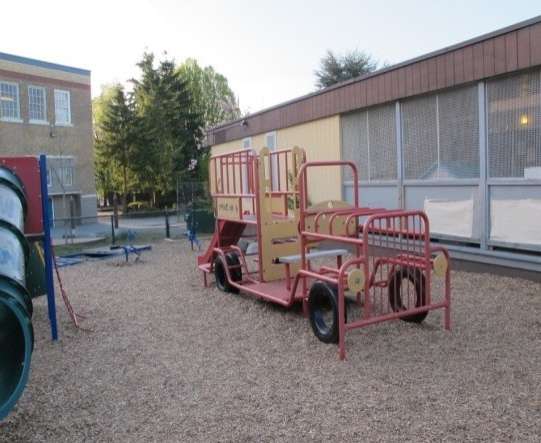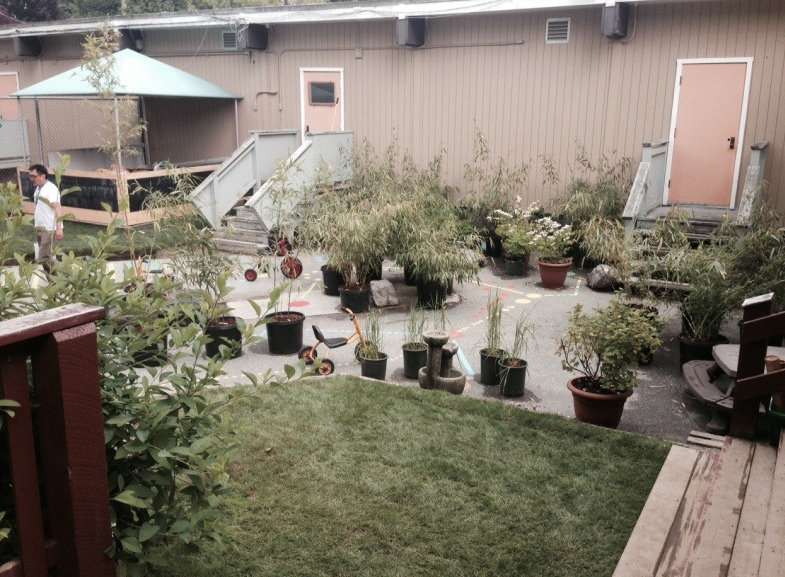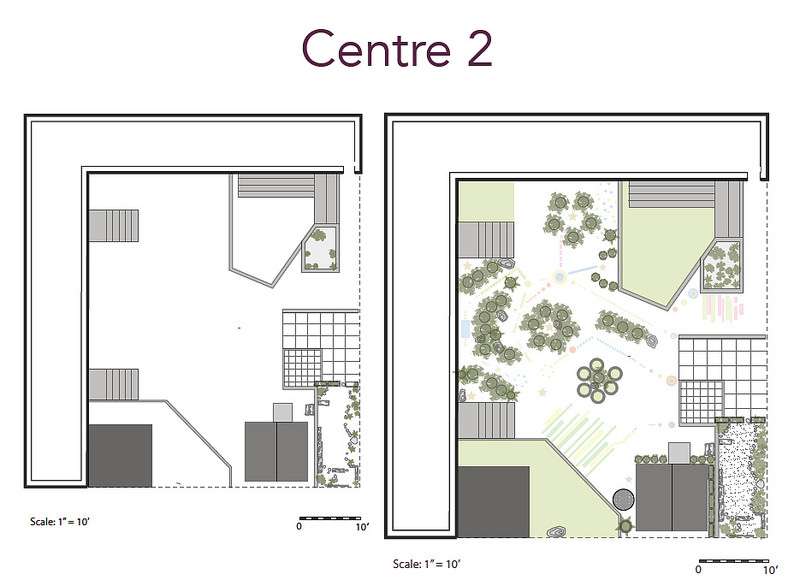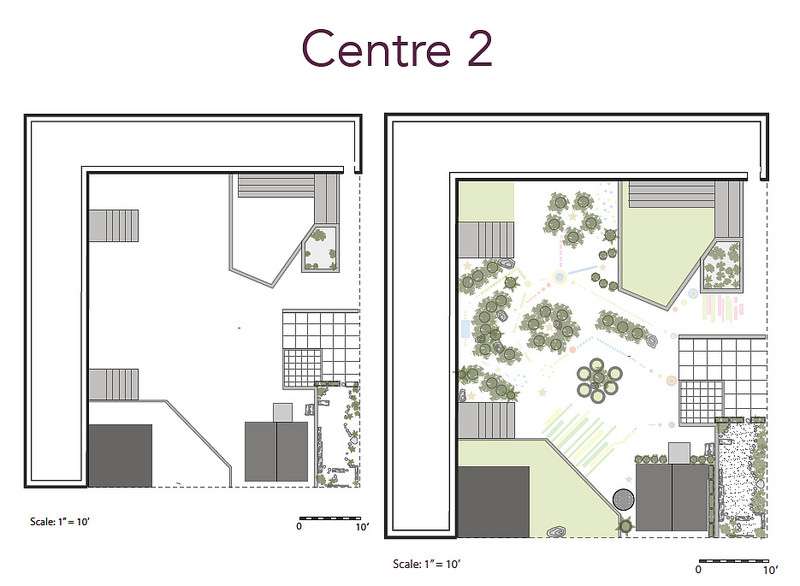Centre 1 before
Adding natural elements like sand, bricks and bamboo can transform a dull outdoor play space into an imaginative playground for children and even reduce depression signs, according to a new UBC study.
The study, conducted over six months in 2014, involved adding things like sand, grasses and water features to the outdoor play facilities of two daycare centres in East Vancouver, and observing children's behaviour before and after the change.
"Both play spaces were quite plain and were really just open spaces, dotted with a play set or two," said lead author and UBC landscape architecture professor Susan Herrington. "We transformed the play spaces using the Seven Cs principles, which highlight the importance of concepts like character, context and change in designing great play areas."
Master's student Sara Brunelle created "sub-spaces" or virtual rooms in the open space by using plants or potted bamboo as dividers. She also introduced greater variety and texture to the spaces through ornamental grasses, sand, bricks and water features.
Researchers waited two weeks after installation before the children were tested again. They observed marked increases in the children's activity on the playgrounds.
"Many kids used to just wander around listlessly or do the same thing over and over," said Herrington. "After the redesign, they were much more energetic and creative, exploring their environment, touching things, inventing games and interacting with their peers a lot more."
Centre 2 after
Children also spent a lot of time enjoying the new sub-spaces, which were used as places where they could get some quiet time, or as locations for games of make-believe, said Herrington.
Children also appeared to be happier. A decline in depressive behaviours—measured using a popular assessment tool—was also observed.
"Depressive symptoms like looking sad or not smiling much went down after the modifications. The videos showed kids much more engaged in play and engaged in positive ways with each other," said co-researcher Mariana Brussoni, an associate professor in UBC's school of population and public health and pediatrics, and a scientist at the Child & Family Research Institute at B.C. Children's Hospital.
Centre 2 before and after diagrams
Brussoni added that the kids became less dependent on their teachers in the new play spaces and interacted with the adults just seven per cent of the time, compared to 19 per cent before the redesign.
"Our study shows that you don't even need a huge budget to add nature into a space—you can be creative with a just a few inexpensive twists," said Herrington.
The study involved 46 children ages two to five and was supported by the Hampton Fund. It will be submitted for publication this spring.
Centre 1 after
Provided by University of British Columbia









.jpg)

















